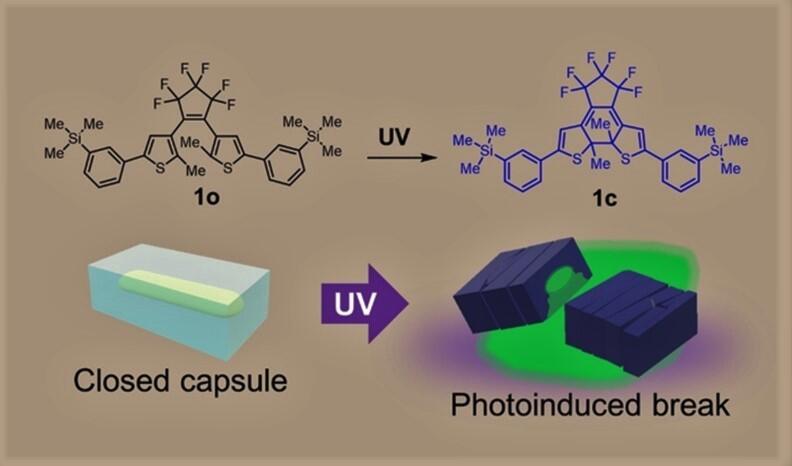A research group led by Professor Kingo Uchida of Ryukoku University's Faculty of Advanced Science and Technology, Course of Materials Chemistry, succeeded in developing the world's first "crystal capsule" that emits its contents upon light irradiation, imitating the seed-releasing mechanism of the balsam flower. According to Professor Uchida, "The research group were studying photochromic diarylethenes (compounds that change color with light) whose molecular structures and color change reversibly in response to light. The crystals exhibit a photosalient phenomenon, whereby they crack or break apart when exposed to light. However, the research group believed that the cracking of the crystals would hinder its practical applications. With this in mind, the group aimed to create a crystal capsule that releases its contents upon light stimulation, similar to the balsam."
With this idea in mind, the research group undertook a trial-and-error process without a theoretical method to determine the type of diarylethene (DAE) molecular structure that is required to form crystal capsules. As a result of this process, it was found that when the substance to be encapsulated and DAE were dissolved in an organic solvent, DAE capsules containing the substance were produced.
Additionally, as an easy-to-identify inclusion, the group selected a fluorescent dye called fluorescein that emits green fluorescence. They dissolved and mixed fluorescein with DAE1o (the o represents an open-ring isomer) in an alcohol solution at room temperature. Afterward, once the solvent evaporated, 1o crystal capsules containing the alcohol solution of fluorescein were produced at a yield of 21%. When the same crystal capsule was irradiated with ultraviolet light, it broke due to the photosalient effect, and green fluorescence was emitted around the capsule. On top of this, the size of the resulting crystal capsule could be reduced by shortening the recrystallization time.
The results of this research reveal that the capsule can be cracked even by irradiation with near-infrared light, which is in the wavelength range called the "biological window." Furthermore, since the molecules are regularly arranged in one direction in this crystal, only polarized light in a certain direction can induce the photosalient phenomenon; this feature is expected to be useful in several applications. According to Professor Uchida, "If the correlation between the molecular structures and the structures and properties of the crystals it produces can be understood clearly, the design of materials can be improved in the future. The research group intends to clarify such a relationship so that anyone can synthesize molecules according to their desired function."

Credit: Ryukoku University
This article has been translated by JST with permission from The Science News Ltd.(https://sci-news.co.jp/). Unauthorized reproduction of the article and photographs is prohibited.




